This is the fourth in a continuing series that will look back at the 2020 season for most of the Giants rookie players. So far, we’ve covered:
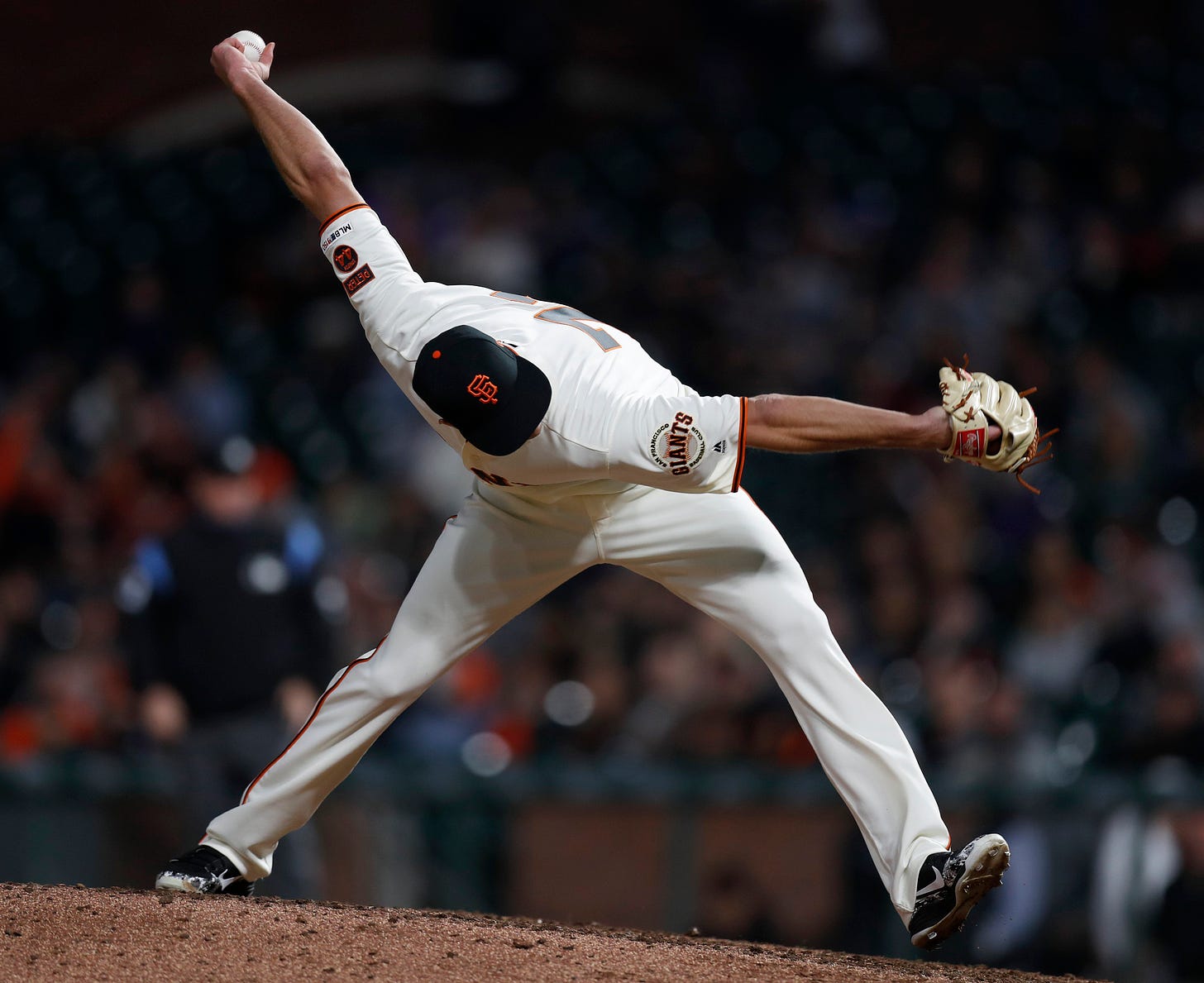
Photo credit: Nhat V. Meyer/Bay Area News Group
Sticking with the bullpen, let’s try to make sense of everybody’s favorite funky knuckle-dragger (not in the retrograde sense, obvi): Tyler Rogers. And like his port-side colleague from the last installment, Tyler took a long circuitous route to the big leagues. My logic in sticking with the rookies on the Giants’ roster in these retrospectives is that my normal zone is and prospect beat, and rookies are the closest things to prospects that we had in Baseball 2020. But having said that, it’s remarkable how much of a breed apart Rogers and Caleb Baragar really are from pretty much everyone else we’ll cover here.
Joey Bart, Mauricio Dubon, Logan Webb, heck even Sam Selman and Luis Basabe are guys who were well known to prospect hounds. They popped up regularly on their league top 20s and organization top 10s. But Baragar and Rogers trodded paths well out of the spotlight. Rogers barely ever appeared in The Prospect Handbook — and on the rare occasion when he did, it wasn’t in the top 30, it was in the depth charts that went well beyond the top 30. Way, way beyond the top 30 — and most of the time during his career Rogers didn’t even rate a mention there. Just to illustrate the regard in which he’s been held — here was the RHP depth charts in The Prospect Handbook following a year in which he’d posted a 2.37 ERA in the hitter-crazy PCL:
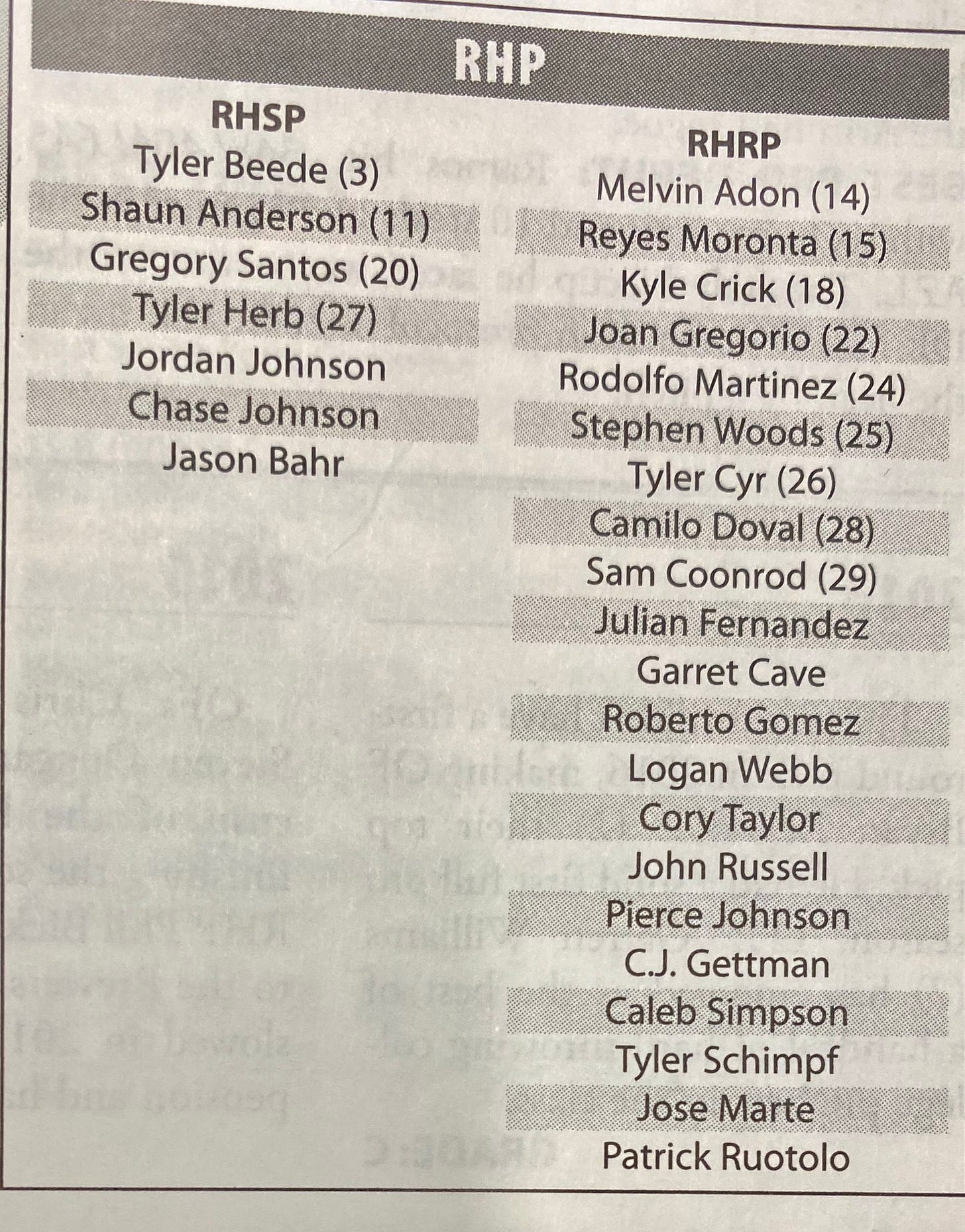
Yep. That is WAY down the list. And this isn’t to throw shade at Baseball America, the Giants front office at the time seemed to hold the side-winder in similar regard (and actually, BA did a pretty great job with some of those down-ballot selections!).
I mean really, is this anyway to treat the 2013 D1 national leader in Saves and Austin Peay legend? Rogers posted a tiny 1.47 ERA in the offense-friendly California League in 2015, then moved up to the AA challenge and dropped it to a microscopic 0.77. He consistently posted low ERAs in the PCL and improved his peripherals each year. But no matter how good his performance, he could never catch the eye of front office that held reliable relievers in high regard. There was never any indication that they saw the makings of a major leaguer in Rogers. It’s a testament to the open-mindedness of the current Giants’ regime that they were willing — eager, perhaps — to look beyond the ugly duckling radar gun readings and see a potential swan in their gangly reliever.
So finally given the chance, how did Tyler do? The answer to that is something of a Rorschach Test. If you’re enthusiastic about having Rogers on the team then you’re likely to point to the fact that he allowed 0 earned runs in 24 of his 29 outings this year. Or that from August 1st on, he posted a 1.88 ERA while leading the team in appearances (24 IP) and striking out more than a batter per inning. Or to the fact that he was equally effective at retiring LHH (.725 OPS) as RHH (.700). All of these, indeed, are terrific blocks to build on.
Even the few blow up outings that led to his perpetually bloated ERA had mitigating factors. It’s not like he was ever really hit hard. But just as his pitches approached batters from oblique and disorienting angles — batters sometimes returned serve with batted balls that defied logic.
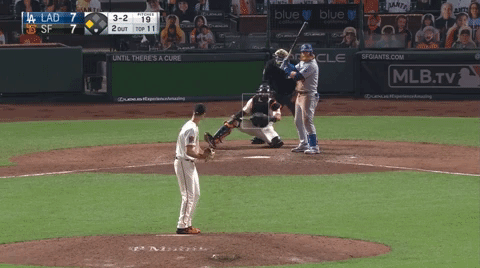
Seriously, what was that?
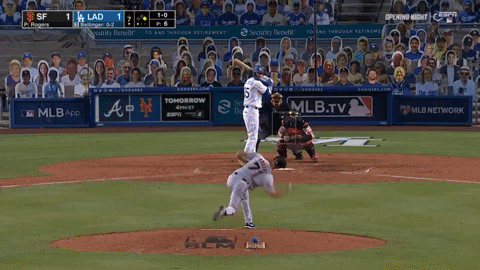
Or that?
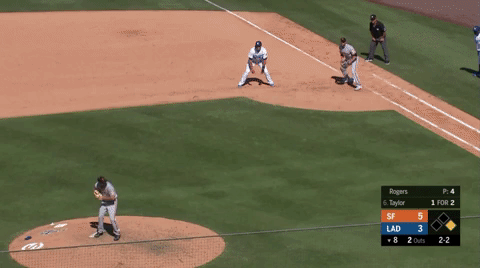
Or good gawd THAT?!?!
He was like the GIGO (“garbage in/garbage out”) of pitchers. “You throw a pitch that makes no damn sense at me; I’m gonna hit something that defies physics back at you!”
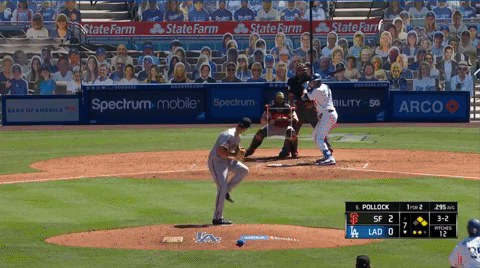
Yes, ok. Sometimes there were hard hits. But honestly, not that many! Rogers was in the top 1% of major league pitchers in Barrel percentage (Statcast’s amalgamation of elite exit velocities paired with a launch angle that almost guarantees extra bases). He was in the top 12% in terms of expected Slugging Percentage (just .310). He specialized in weak contact like few pitchers in baseball.
BUT. He also specialized in just plain old “contact” like few pitchers in baseball. Old friend Grant Brisbee pointed out in his recent look at the Giants bullpen that this was a team-wide issue. The Giants bullpen K/9 of 8.09 was 28th in baseball this year. If you prefer K% (dividing by total batters rather than by outs) they climb up to 27th. Progress!
And, as Grant also noted, Giants’ relievers managed this somewhat astonishing combo job:
Here’s a remarkable combination of stats that explains the bullpen problems of the 2020: Giants relievers threw the highest percentage of pitches in the strike zone among NL teams and they also got the lowest percentage of swings on pitches out of the strike zone.
They lived in the strike zone. They didn’t get batters to chase. They gave up as much contact as anybody in baseball. And in all of these things, Tyler Rogers was something of an emblem. His percentage of pitches in the strike zone was 9th highest in baseball (though this was ameliorated somewhat by an abnormally low percentage of batter swings at pitches in the zone — funky action For The Win!) His ability to get batters to chase balls out of the strikezone was 14th lowest in baseball. His swinging strike percentage was in the bottom of 30.
None of these are by themselves bad, necessarily — and in each case teammates Caleb Baragar and Jarlin Garcia are above (or below) him. Garcia’s swinging swinging strike percentage of just 6.3% was third lowest in baseball. And everybody’s favorite new Dodger flamethrower Brusdar Graterol was lower still.
But taken together it does all mean that Tyler Rogers’ game (and the bullpen writ large) is a pitch to contact gambit in a strikeout world. He induces some of the weakest contact in baseball. But he induced a lot of it. Seventy percent of the batters he faced put the ball in play, and that means that even with today’s shifting information, sometimes balls are gonna do this:
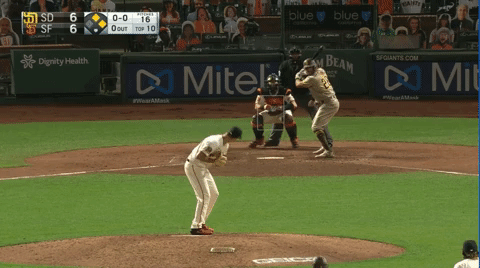
Tyler Rogers led the Giants in appearances this year. He threw more innings than any reliever on the team. And in 86 balls hit into play he allowed just 1 barreled ball (though 2 HRs which is somewhat counter-intuitive). Put those facts together and you’ve very likely got a useful middle innings reliever who can pitch back to back and give you some coverage when needed.
But it also means his fate is always in the hands of the treacherous BABIP gods — and sometimes they just like to see a man flail. Which makes him the tiniest bit dangerous as a high-leverage guy.
So what’s your Rorschach answer? What do you see when you look at Tyler Rogers’ year?
2021 Draft
The Draft Order for 2021 is officially set and the Giants will have the 14th pick (logically, for the first team left out of the 16 team playoff field). My friends over at Prospects Live celebrated the occasion with the very first “way too early” mock draft and I think they hit the nail square on the head with the Giants. Not to say that Louisville 3b Alex Binelas is necessarily the guy — but a college performer from a big conference (and a school that Farhan Zaidi has drafted from repeatedly) certainly is the right phylum to look in. And if it happens to be an infielder, likely all the better for a system that is a little OF heavy in its top prospects.



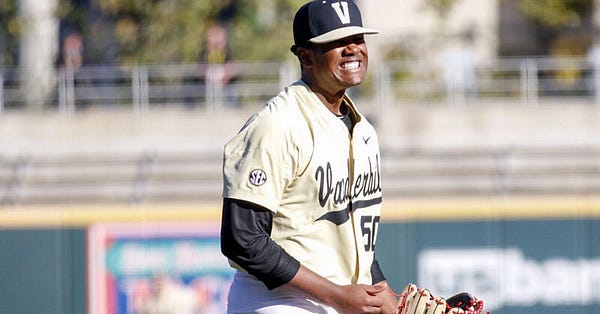
I think Rogers is a solid setup man who had really bad BABIP luck over a few games that lead to 9 earned runs in just two games. And you see it in his ERA splits:
July - 20.25
Aug. - 1.26
Sep. - 2.79
And a K/9 of 9.4 over August/September. Honestly, it was just two bad games in July where I watched in horror as it seemed like nearly every ground ball found a gap in the defense (.450 BABIP).
Chris Dominguez too, right?